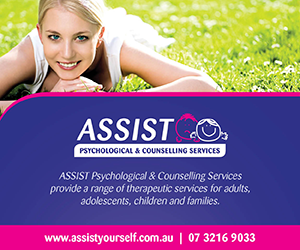The rate of unemployment for people with a disability is 7.1 per cent. You might think that’s not too bad, except that the unemployment rate doesn’t really tell you much. The more telling statistic is that their workforce participation rate is almost three times worse than the rest of the population.
Some people with disability opt out of the workforce because they have no choice; their disability is so severe it renders them unable to work. Many more, however, want to be employed but feel they can’t apply for jobs because of the stigma permeating many workplaces.
This was front of mind last week at a disability employment conference I attended. An audience member asked a bureaucrat a question. The problem, he said, wasn’t that there weren’t enough candidates desiring employment. The problem was that many employers still view workers with disability as being inferior to everyone else. How can that be overcome?
The bureaucrat’s solution was novel. He suggested recruiters should put candidates forward for vacancies without describing them upfront as having a disability. That way, the employer’s first impression isn’t focused on what the candidates can’t do but on what they can.
Why the negative perception still persists is a mystery. Research proves workers with disability take fewer sick days than those without. They are also less likely to resign and there are no differences in productivity, performance, workplace injuries and cost.
And yet looking back to my previous employers, I can’t recall ever seeing a person with disability employed in the office. These were some of Australia’s largest organisations with the capacity to at least experiment but it never, as far as I was aware, happened. 
One reason could be employers expect so much from their employees. This was validated just this week with the release of a comprehensive report that confirmed the balance between work and life is deteriorating, resulting in $110 billion of unpaid labour a year.
So it’s possible, then, that many bosses are thinking: if my usual employees can barely handle their workload, what chance would a person with a disability have?
That viewpoint was reflected in a survey conducted two years ago by the Australian Human Resources Institute. Among organisations that had never hired an employee with disability, almost half said it was not on their radar to do so. A third admitted there would be a lack of managerial support, with a quarter saying there’s a belief they’d be a risk and wouldn’t perform as well.
This perpetuates an endless cycle. With relatively few people with disability employed in the workforce, their lack of visibility feeds the incorrect perception they can’t be effective at work. The consequence of such a perception isn’t limited to their employment prospects but also to their self-esteem.
Earlier this year, the University of Western Sydney published the findings of a study into people with multiple sclerosis. The researcher, who has MS, felt “dirty” – not because of the work she did but because of the way she was stigmatised. She embarked on the research to see if others felt the same way.
Her intuition was verified. She discovered three forms of stigma:
- Physical: MS sufferers felt they had “abominations of the body”.
- Social: They felt excluded for being an “undesirable” colleague.
- Moral: They felt they were judged negatively by others.
As one of the respondents put it: “I won’t say to my work colleagues how dreadfully, dreadfully tired I am. Or how stressed or muddled. I’ll tell my friends to a certain extent but, even then, I don’t want to tell them because I don’t want it to affect their view of me.”
This article first appeared on ‘The Age’ on 21 November 2014.























